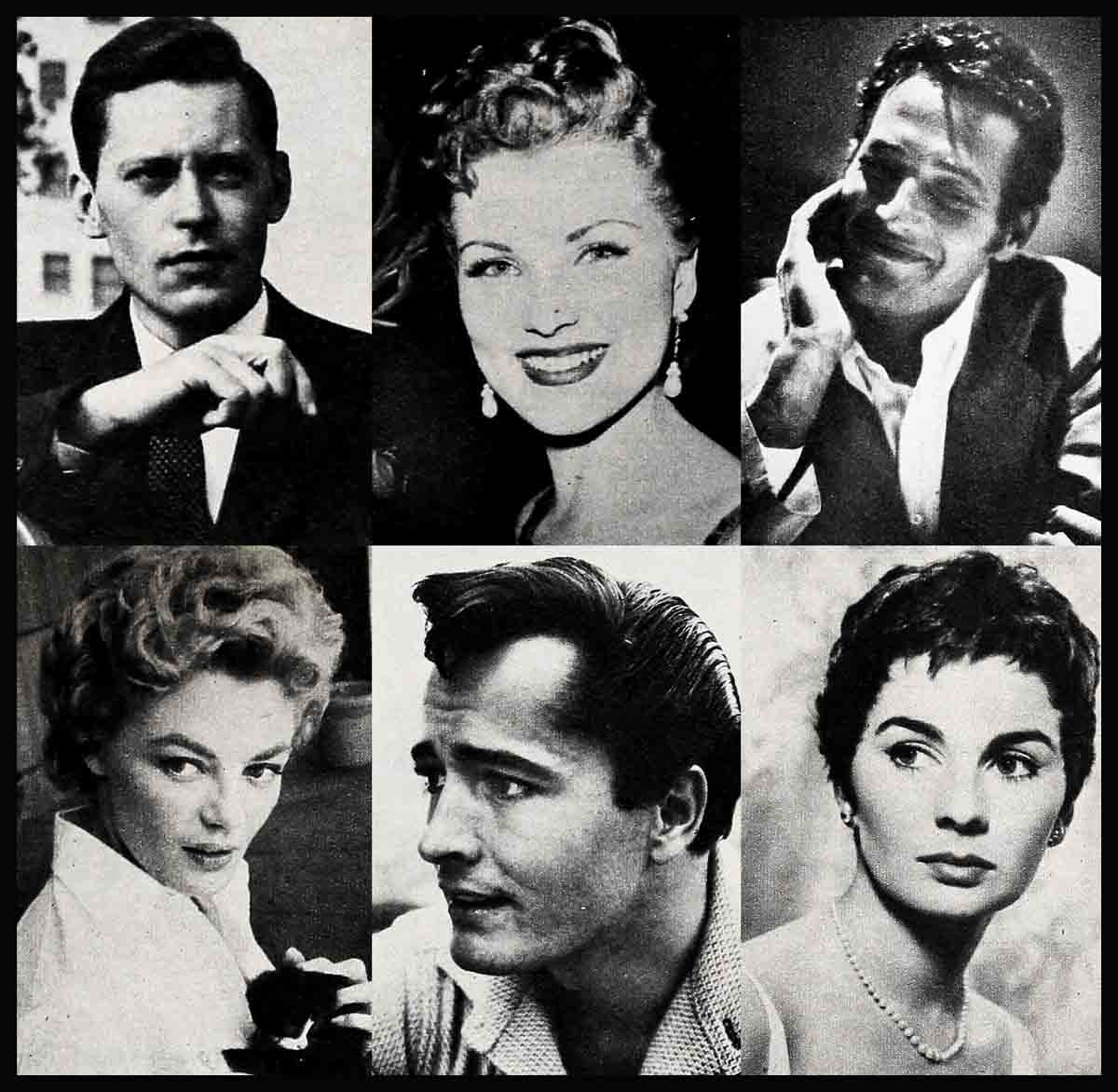
These Stars Need Your Help
“You can’t find talent these days.” How many times have we heard this cry coming out of Hollywood. Yet. while talent scouts beat the hinterlands for young personalities, some of Hollywood’s most promising newcomers of a few short years ago now languish low at the casting offices. How come? We wanted the answer.
The following report was gathered by Lawrence Quirk for Photoplay from talks with people whose business it is to know what makes—or breaks—a potential star. This is the story of nine players who are at the crossroads in their careers. The right road leads to lasting fame; the wrong one to oblivion. All nine need your help. Read their stories, then tell them what you think they should do.
You can write to them care of Photoplay, if you want to, and we will forward your letters directly to the studios, where the stars will receive them.
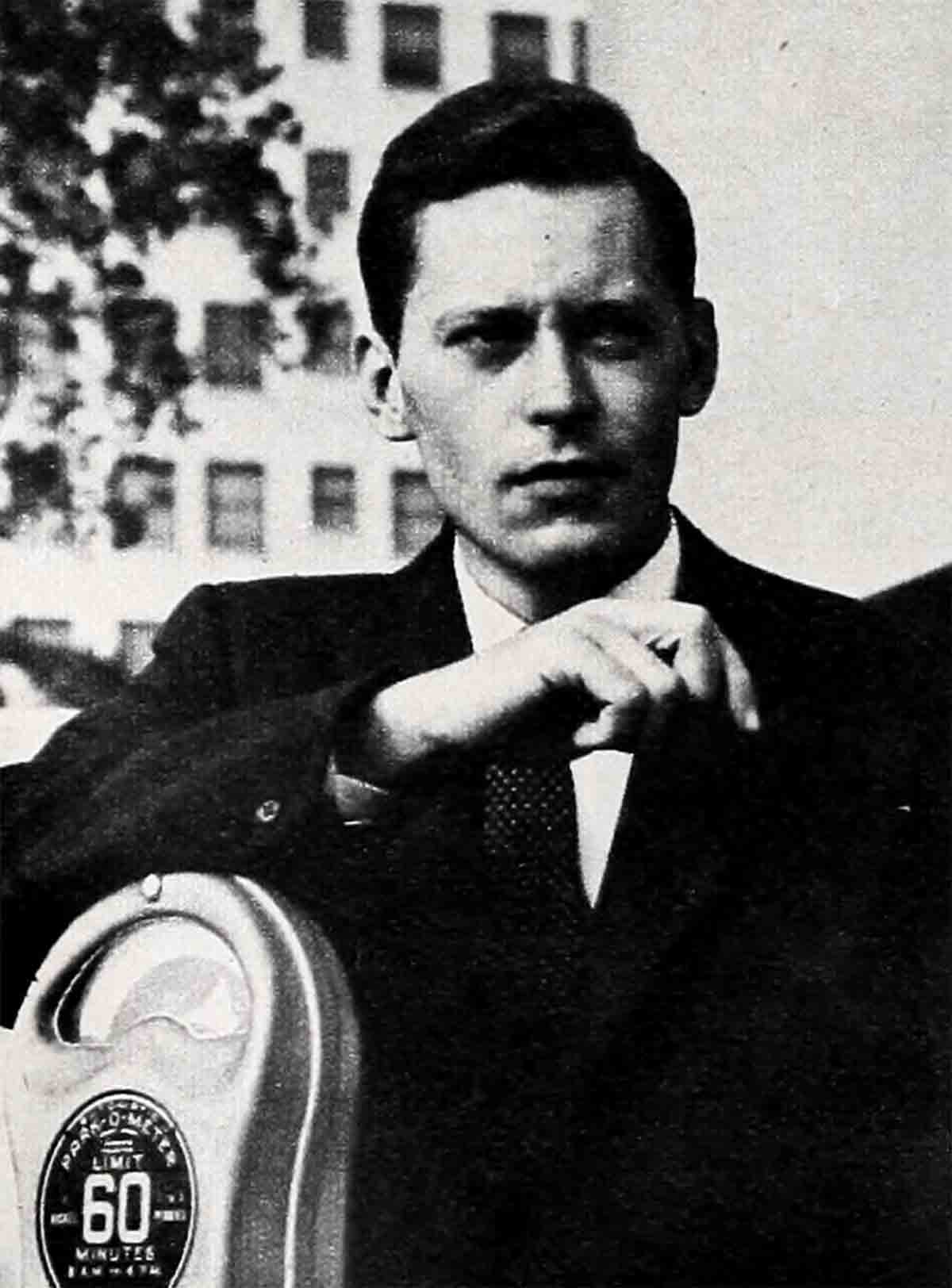
JOHN KERR
This time last year the Hollywood Wisenheimers thought John Kerr would make it as a major star, if only because the intellectual, sensitive type of chap seemed to be coming into vogue. But something went wrong.
John, son of stage actress June Walker, and brought up in the traditions of the theater, had a Harvard degree, a pretty wife, twin daughters and behind him a smash hit as the sensitive schoolboy of Broadway’s “Tea and Sympathy” when he made his film debut in M-G-M’s “The Cobweb” in 1955. In this he did what came to be known as a typical Kerr part, that of a high-strung, emotionally off-kilter young patient in a mental sanitarium. The critics liked him, but the mixed public reaction made his studio nervous and it rushed him into a romantic lead with Leslie Caron in “Gaby,” a remake of “Waterloo Bridge.” The film on release was compared unfavorably with the earlier effort starring Vivien Leigh and Robert Taylor. John seemed miscast as a dashing young American soldier who romances a ballerina in World War II London.
Next he played his “Tea and Sympathy” stage role for the cameras. Again the critics went all-out for Johnny, who played the prep school “offhorse” superbly, but again the vast majority of the film public didn’t know quite what to make of him. M-G-M executives decided Johnny was a talented boy who was fated for the “prestige” rather than the “boxoffice” echelons. His publicity, showcasing him as rather docile, publicity-shy and colorless didn’t help the situation either.
John’s next, and last, film for M-G-M, “The Vintage,” was released in early ’57 and caused no lines to form around the block. A rambling affair made in France, the picture had to do with two wanderers who get into love affairs in a village during the wine harvest. Also in the film were Mel Ferrer, Pier Angeli and Michele Morgan. Johnny, the critics opined, had gotten lost in the shuffle. The public seemed to agree.
Verdict: The consensus is that the undeniably talented Mr. Kerr had been the victim of ill-advised casting and generally careless exploitation. A bright note was injected with the news that he had won the role of Lieutenant Cable in “South Pacific,” which 20th-Fox will release in 1958. The role is a good one and may start John’s career on an upswing.
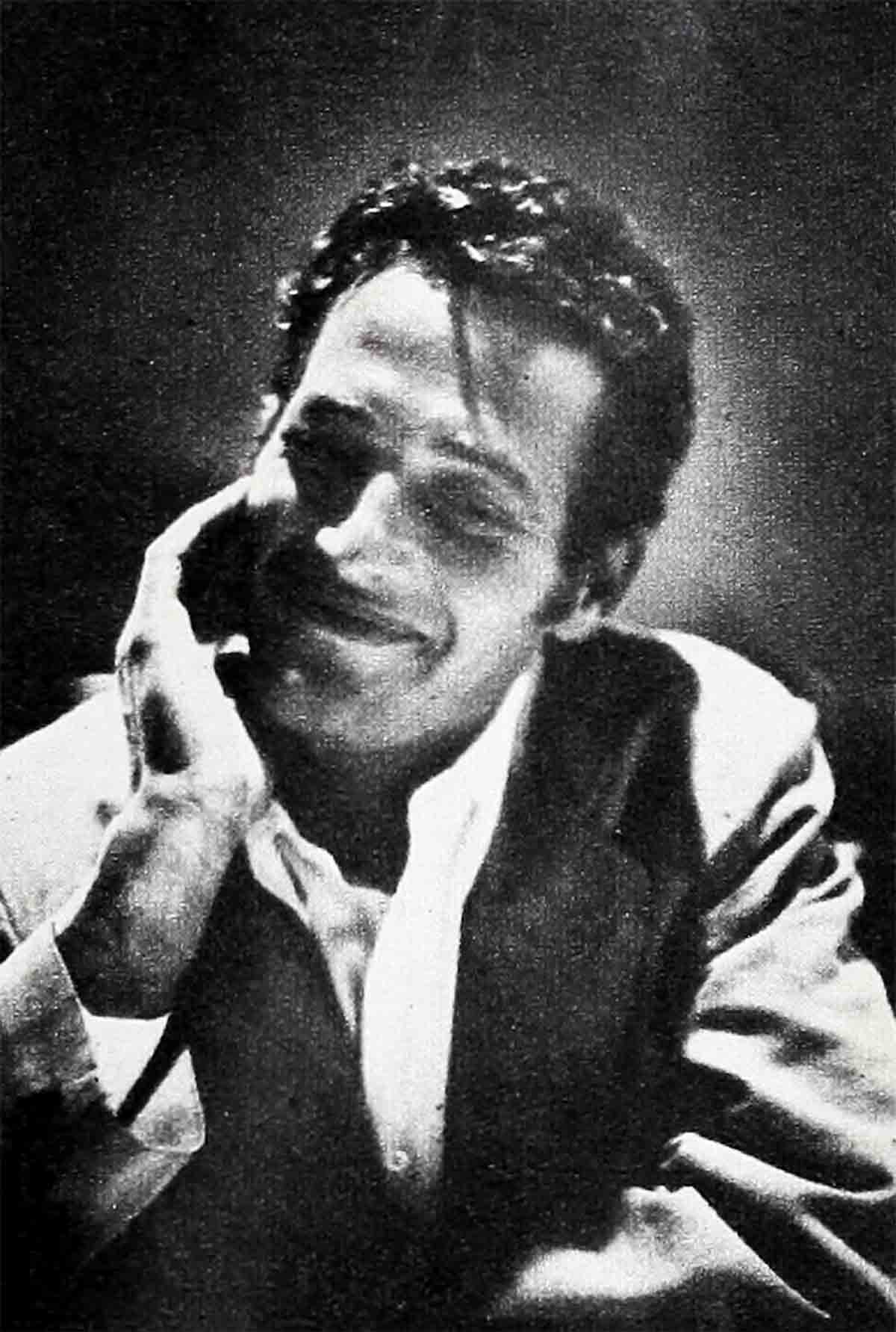
PAUL NEWMAN
Another promising personality, Paul Newman, has some strong roles coming up in Warner’s “Helen Morgan Story” and “The Left-Handed Gun” and also in M-G-M’s “Until They Sail.” These may salvage his badly stalemated career.
In the beginning, Paul, a stage and TV actor who broke into films in Warners’ “The Silver Chalice,” had one strike against him. This was his almost uncanny resemblance to Marlon Brando. There was also a strong similarity in the two men’s acting styles and personality auras on-screen. A close resemblance to a starring predecessor has always been the bane of Hollywood performers, and Newman’s case was no different. A worried Warners, undecided what to do with him, lent him to M-G-M for two pictures. The first, “Somebody Up There Likes Me,” which the late James Dean was to have done, was the biography of fighter Rocky Graziano. It won him widespread public interest and critical respect to boot.
The second, “The Rack,” won him more critical kudoes for his portrayal of a sensitive victim of Chinese prison camp brainwashing, but the public response was less than enthusiastic, possibly because of the controversial theme and subtleties of characterization. Then many months went by with no Newman appearances on-screen.
Verdict: Newman can succeed, with choice variety of roles in getting out from under the “Brando-type” tag, and as he is an accomplished actor he should find good roles coming his way. He seems to have ironed out certain personal crises, including a separation from his wife that left him upset for months, his rugged good looks and appealing personality are definite assets, he is still young (32) and with proper attention to his career on the part of studio executives, and some strong backing from his fans, Paul is certain to start climbing upward again.
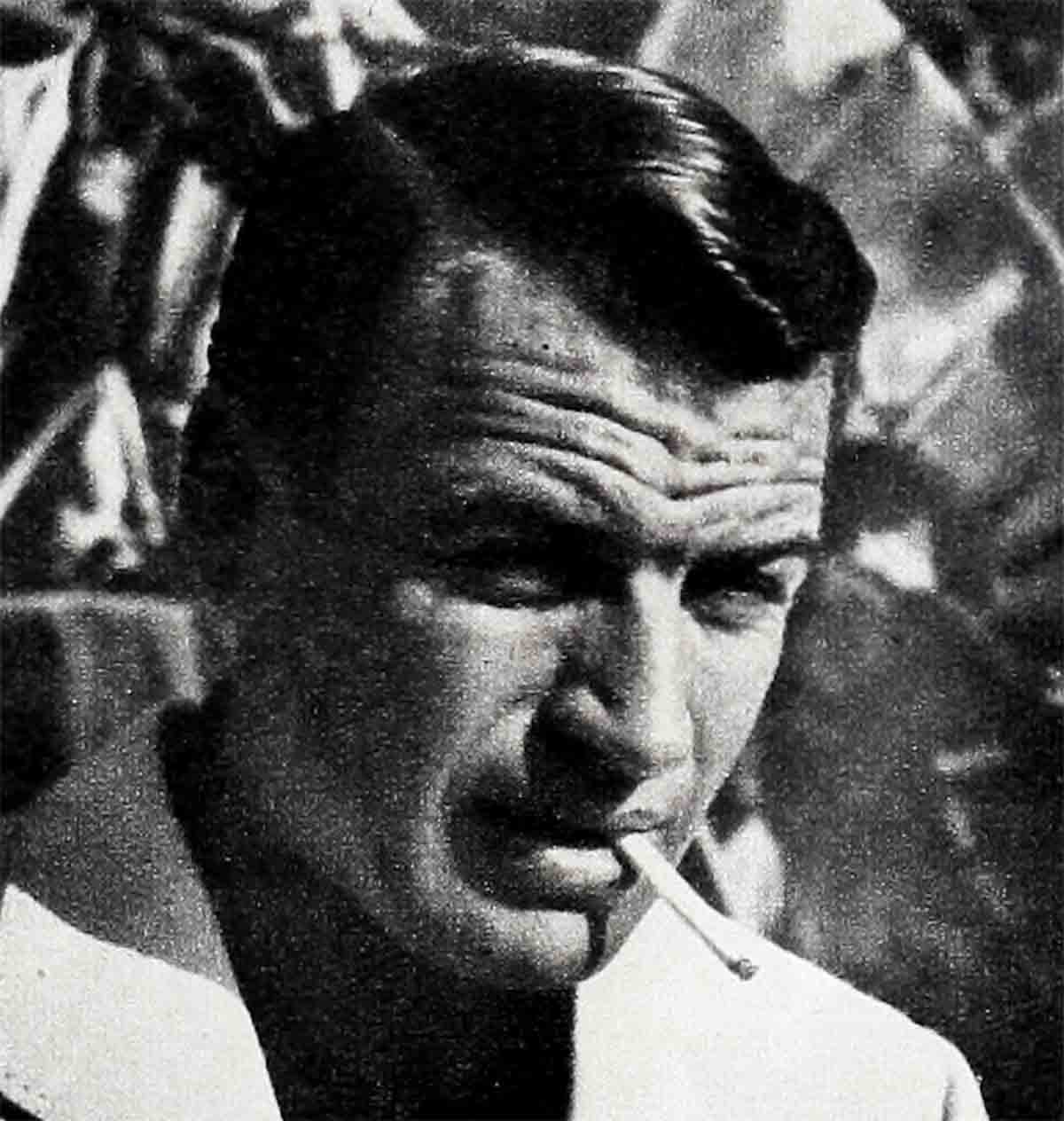
RICHARD EGAN
Richard Egan, a year ago this time, was one of the hottest actors in films. He went tobogganing for a very simple reason. He drew inferior scripts.
No one worked harder to prepare for an acting career than Egan. He got an M.A. in theater history and dramatic literature at Stanford, appeared in every college and little theatre play he could, found himself haunting Hollywood studios at a later age than the average actor because of the four precious years of his Twenties he had spent in the Service. In 1949, age twenty-eight, he finally got his first break in Joan Crawford’s Damned Don’t Cry,” secondary film stints before stardom finally came two years ago.
Typical of his bad luck during the past year was his role in Elvis Presley’s debut film, “Love Me Tender” for 20th. Though Rich had the stronger part, he was still expected to carry a film in which another personality was the focal point of fan interest. Today Egan is a fine, mellowed actor. A devout Catholic, he is respected in Hollywood. His straight-and-narrow private life may have robbed him of some color—and news space—but it would not of itself had put him on the toboggan. Weak roles in weak pix did that.
Verdict: Rich could become another Gable in the right parts. It’s up to you. You can let a promising guy go down the drain, or you can send him on to fruitful decades of stardom. All he needs is major roles in majorpictures.
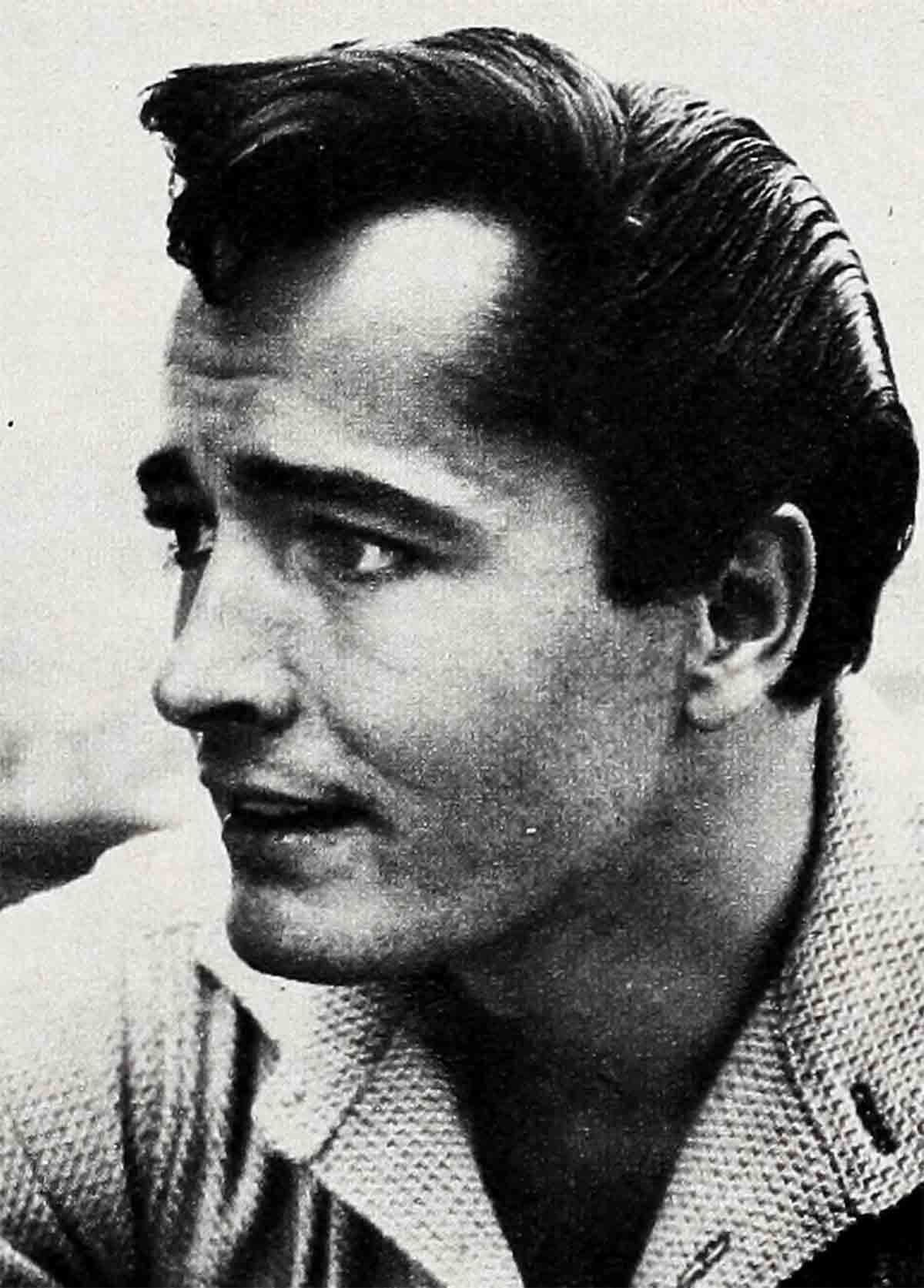
JOHN DEREK
John Derek’s face was his fortune in 1949, the year he hit it big in movies. But it would seem to be his chief liability in 1957. At thirty, he still looks like a dark-eyed cherub. When he first shot to fame under the aegis of Humphrey Bogart in Columbia’s “Knock On Any Door” (eight years go by swiftly) he was hailed among other things as “the New Valentino” and Columbia, which put him under contract, was enthusiastic.
For a while John basked in his newfound security. After some five years of struggle in small parts and a frustrating contractual involvement with 20th Century-Fox, John felt confident of the future. But a series of A parts in B movies and B parts in A movies followed, and by 1953 it was obvious to everyone, including John, that something was seriously wrong. Undaunted, he tried to win respect as an actor at other studios. In 1954 he banked on the small but meaty role of John Wilkes Booth in the Richard Burton starrer, “Prince of Players,” to put him over. Though he turned in a competent acting job, it wasn’t quite sharp enough to establish him as a leading performer.
Verdict: Today, John Derek is in a serious rut. At 30 he has not shaken off the “pretty boy” tab. He gets star billing in secondary features like UA’s “Fury at Showdown,” secondary spots in films like Paramount’s “The Ten Commandments” and “Omar Khayyam.” Today John Derek is unhappily proving a Hollywood rule: Good looks help on the climb to the top, but ability, personality and dramatic parts have to be of ace caliber or else the original asset becomes a great drawback. More than anything else, John wants to establish himself as a mature performer, worthy of serious consideration, good looks aside. To do this he must have intelligent help from producers and a morale boost from fans.
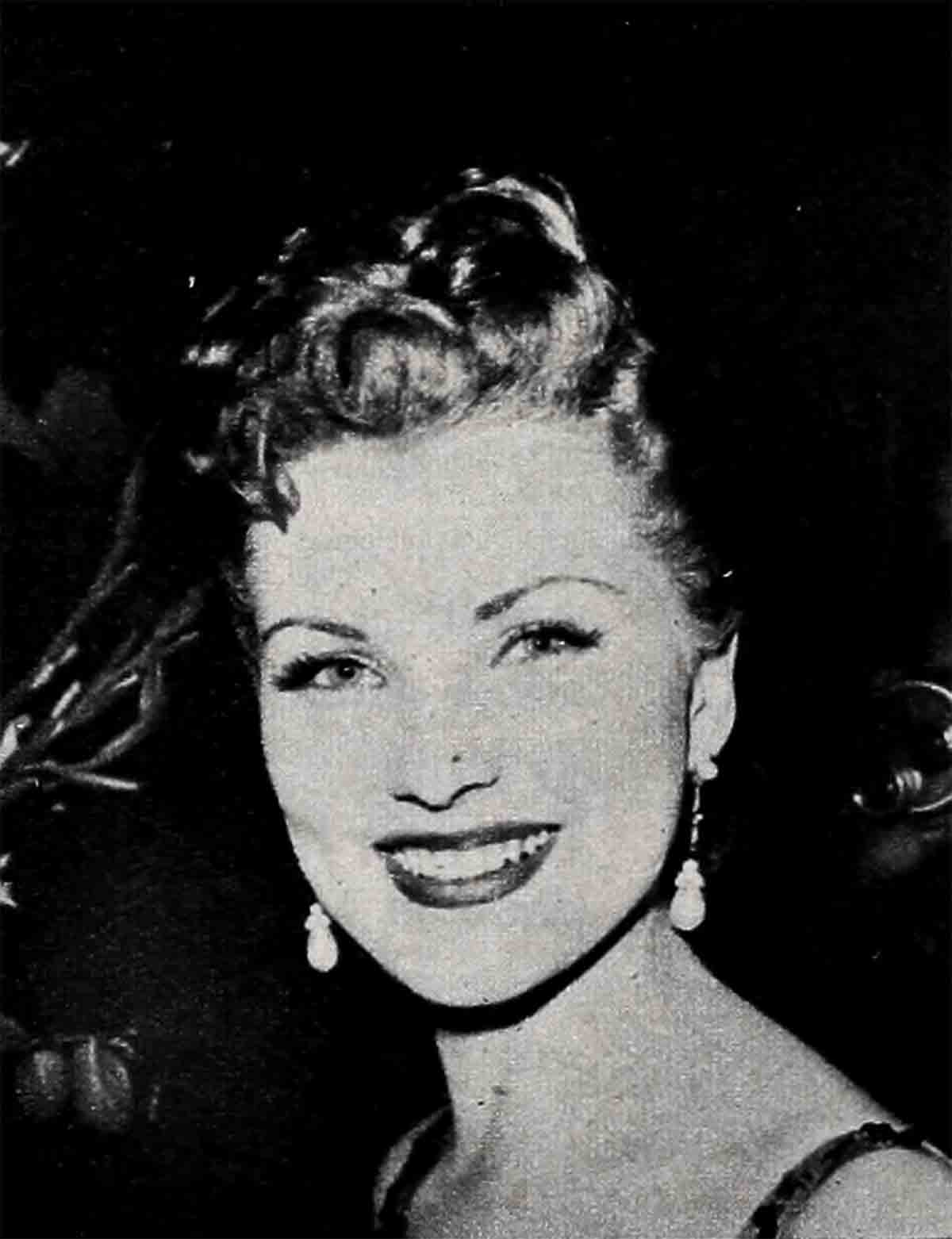
DEBRA PAGET
Debra Paget’s career is the feminine equivalent of John Derek’s—and there is more to it than the fact they both started in movies about the same time, and both have appeared recently in the same two movies, “Ten Commandments” and “Omar Khayyam.” For like John, Debra has pretty, regular, symmetrical features, and these were her fortune, at least initially.
Child of a show business family (her mother was an actress) Debra was signed by 20th-Fox at fifteen, after a scout saw her in little theater roles. That was in 1948. And many ineffectual parts followed, in which Debra rang the bell for pulchritude but racked up no scores for her acting. Today, at twenty-four, she is floundering.
A year or so ago, Deb went on a “glamour” binge, sporting daring gowns, riding around in a pink, jewel-encrusted Cadillac. She took over Connie Bennett’s twenty-six-room mansion, a flamboyant relic of the Twenties, which one wag said was decorated in “Early Hollywood.” All this glamour gloss failed to get her good roles from the studio. Her Hollywood friends looked on disapprovingly, felt it was all phony. They begged her to be herself—shy, simple, sincere, hardworking, sensible.
Deb has never stopped believing that she will one day be a great glamour star—one of the immortals. Will her dream come true? It’s a moot point. Once there was a girl of twenty-four—Deb’s present age—who had only beauty and couldn’t act for beans. Her name was Ava Gardner. Hollywood laughed at her aspirations. But as this girl made the turn into the Thirties, an expansive womanliness, an electric sex appeal, an indefinable glamour came over her and she confounded those who had branded her a pretty climber with no brains, depth or talent. Will Deb do a Gardner?
Verdict: Much depends on the roles she gets. Certainly an “Omar Khayyam” does nothing for her. While she plays in shallow costume epics, her career is slowly being snuffed out. She needs a part, no matter how small, in which she can prove she has star quality. Public demand (strong after “Love Me Tender,” but waning now) just might help her get it.
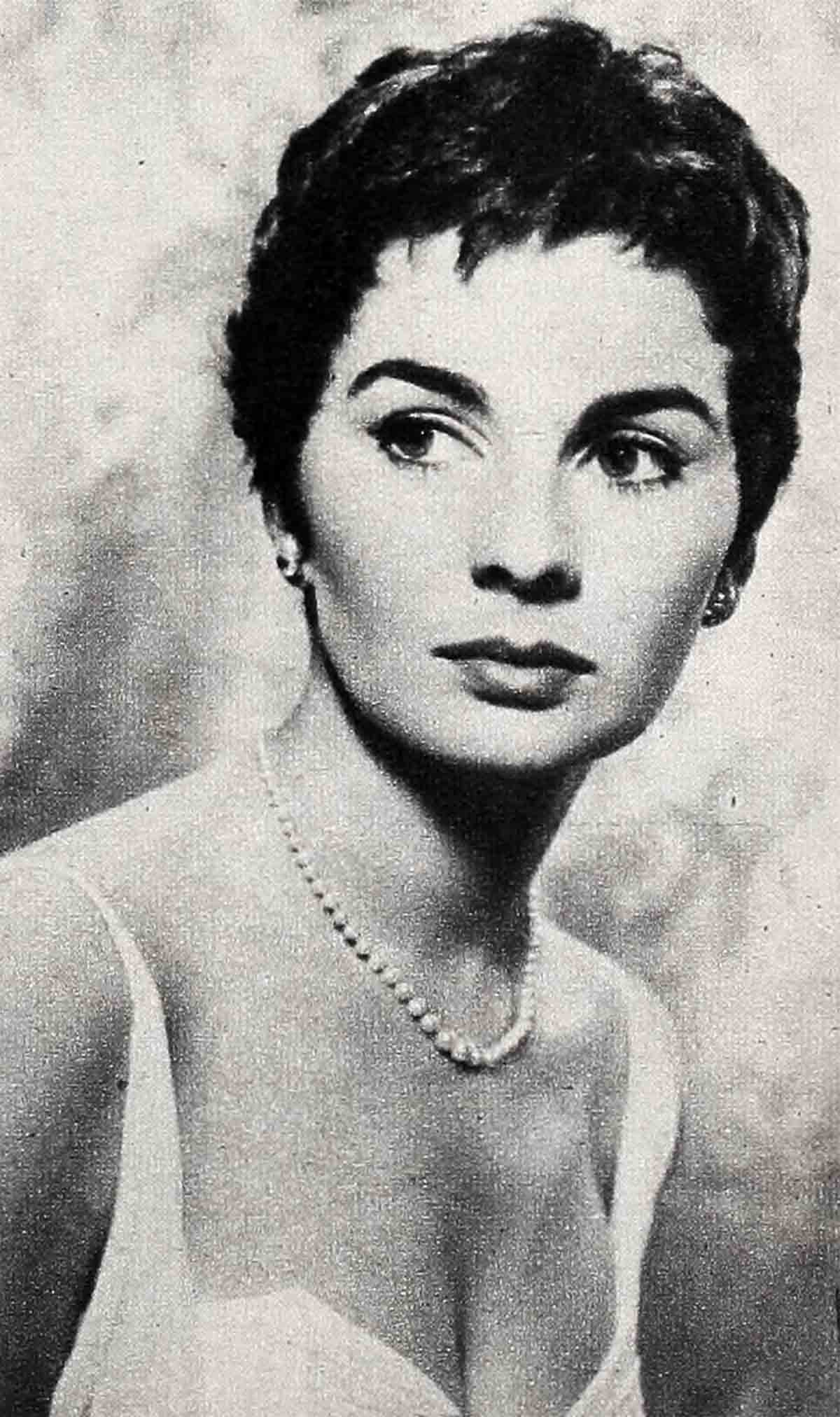
JEAN SIMMONS
She came to Hollywood at twenty-one, a recognized star in England, her birthplace, where she had brought film audiences to their knees with her portrayals in such films as “Great Expectations” and “Hamlet.” After two hesitant years in nondescript Hollywood parts, she hit her stride in M-G-M’s “Young Bess” and followed it up with roles in such A pictures as “Desiree,” “Guys and Dolls,” “Hilda Crane” and the current “Until They Sail” for M-G-M.
What then, is wrong on the Simmons career front? Here are some possible reasons for Jean’s failure to hit straight-A starring status. (Jean is known as an “Aminus” screen personality—the kind who almost, but not quite, makes all-out, permanent stardom.) For one thing, her marriage is all-important to her. She is sensitive to her husband’s personal feelings and career ambitions, and in the European manner, her close friends suspect, she has deliberately inhibited her career ambitions to give Stewart Granger greater glory. Maybe for another thing, while her personality is piquant and charming, she is, on the whole, a trifle British, a trifle quiet and subdued for the larger American public, which idolizes such flamboyant ladies as Rita Hayworth, Marilyn Monroe and Kim Novak.
Though as much the lady as her fellow countrywoman Deborah Kerr, she somehow lacks Deborah’s mellow authority. She is admittedly beautiful, but she resembles too many other screen beauties, notably Vivien Leigh. Lack of shrewd, distinctive personal exploitation, moreover, has left her a nebulous figure in the mind of the moviegoing public. “Oh, yes, Jean Simmons—nice little girl. Wasn’t she the one in ‘Guys and Dolls’?” about expresses the public reaction to her on these shores.
Verdict: Jean is a good actress and this is very much in her favor. If her career continues the way it has been going, the future is reasonably predictable, though not as exciting as it might be. She will probably always have stardom of a sort, but to achieve a permanent place as an all-time great will take an extra spurt of hard work on her part and careful career guidance. Do you agree?
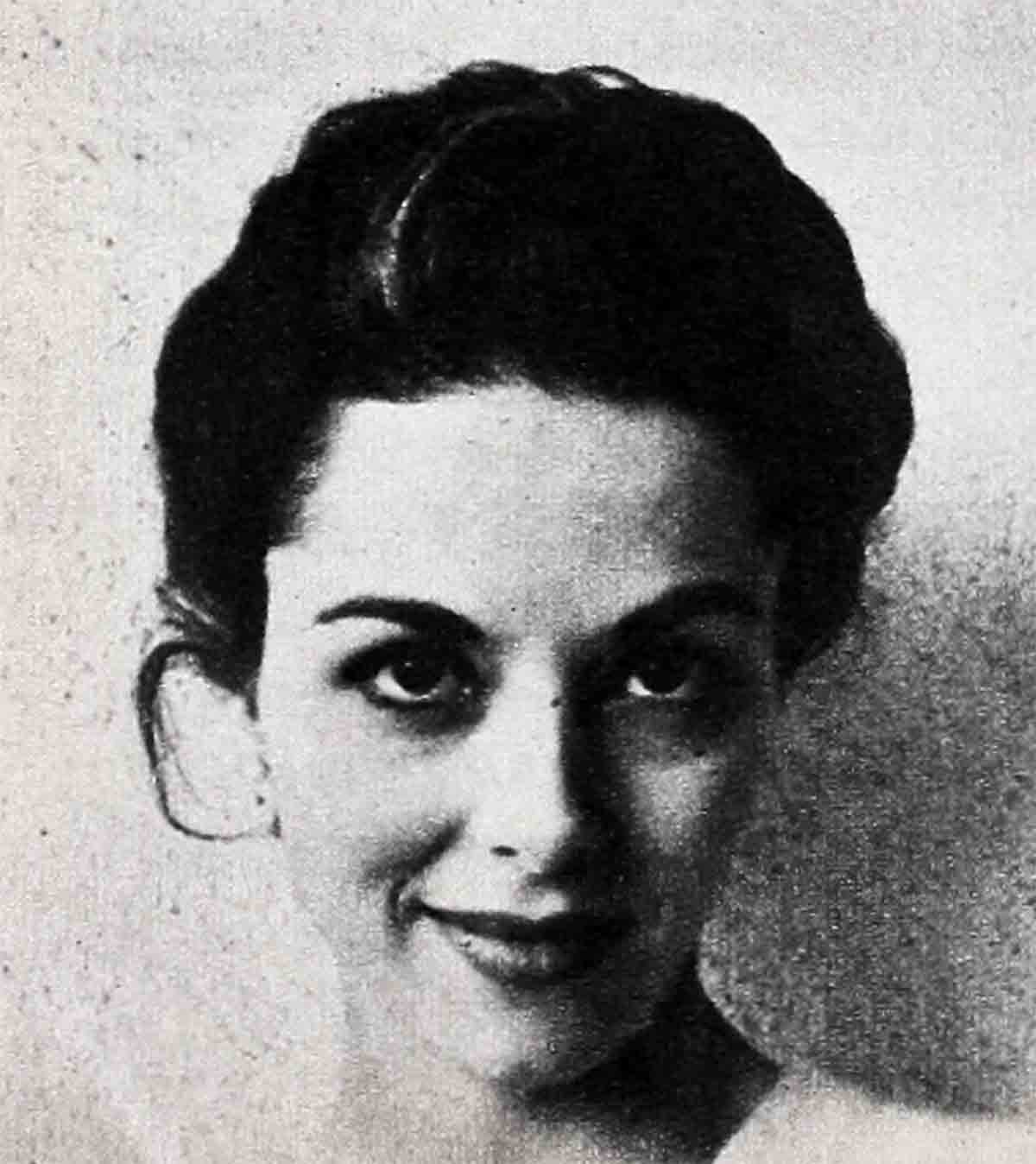
DANA WYNTER
Two years ago when lovely English actress Dana Wynter made her first strong impression on American audiences in 20th Century-Fox’s “The View From Pompey’s Head,” there was considerable publicity buildup about a new star getting herself born. The next year, Dana, after only a few pictures, married Hollywood lawyer Greg Bautzer and announced that henceforth her career was to take a back seat to her marriage. She underlined this by refusing “Island in the Sun” because it would separate her from her new husband for three months.
Daughter of a London doctor who moved to Southern Rhodesia when she was a child, Dana saw the horrors of war in England, developed a maturity beyond her years. Ladylike, well-educated, deep-thinking, Dana seemed headed for success in American films when she married. There were ominous notes, though, even at the beginning. When, after TV and theater stints in England and on Broadway, she made her first movie, several commentators announced that she had the looks of so-and-so, the bearing of such-and-such, the personality of this one and the talent of that one. This “comparisons prove” gambit piques public interest but is generally not helpful to a career.
Verdict: Dana has a fascinating personality all her own, but it has yet to come to full flower on the screen. Though her marriage will undoubtedly always be first with her, she has a deep interest in acting and shows no signs of quitting the business entirely. Continued backing from fans who understand her situation and good pictures should keep her with us a long time.
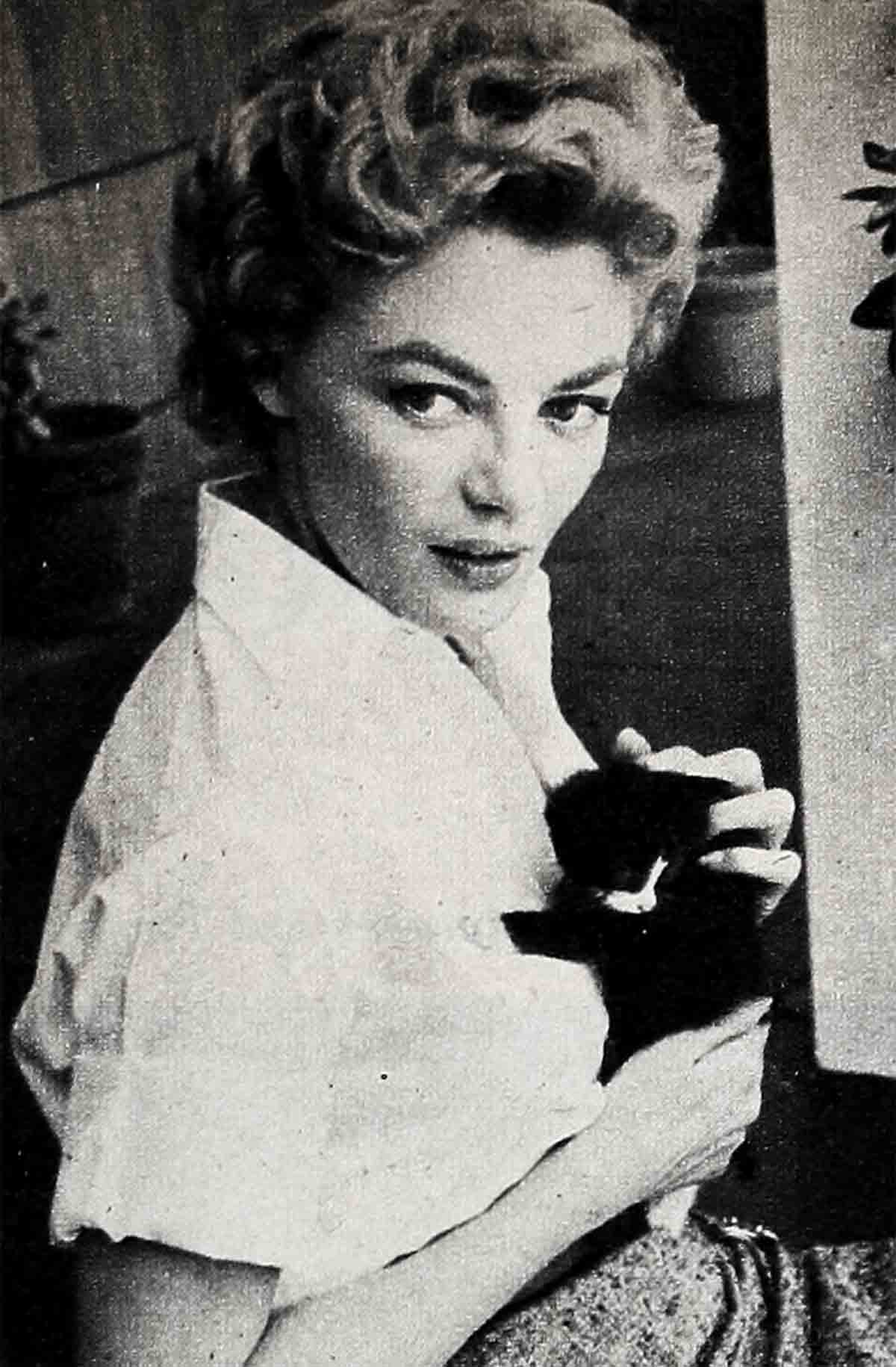
SHEREE NORTH
One girl who is given a better than even chance of rising above her temporary career slump is Sheree North. For Sheree came up the hard way, weathering the toughest kind of night club work, plus a bevy of disappointments on Broadway and elsewhere, and hills and valleys are so much a part of her conditioning that at twenty-four she has a built-in mechanism for rolling with punches, careerwise and personally.
Married at fifteen, a mother at sixteen, divorced at seventeen, Sheree threw herself into a dancing career “to get milk for my baby on a regular basis.” Years of unsung barnstorming brought her finally to national attention on Bing Crosby’s first TV show in 1954, where her lithe, offbeat dancing style electrified viewers. A one-and-a-half-minute dance number in the Broadway musical, “Hazel Flagg,” was so breathtakingly executed that her name went up in lights. Then she did the movie version, “Living It Up,” with Martin and Lewis. Called to replace Marilyn Monroe in 20th Century-Fox’s “How To Be Very Very Popular,” Sheree was an instant success, went on to rewarding assignments in such 20th Century-Fox films “There’s No Business Like Show Business” and “The Lieutenant Wore Skirts.”
Verdict: Conceded one of the best dancers in the entertainment’ world, Sheree has looks and personality to boot. It looked like clear sailing ahead, but weak pictures and strong competition from Marilyn Monroe on the home lot had gotten her into a rut by early 1957. She, and Hollywood, began to wonder if she had had it. Determined to extend her range, she took a dramatic assignment in “No Down Payment,” and movie audiences were mightily impressed with her sincere acting job as Tony Randall’s unhappy wife. Her rooters are hopeful that Sheree may have a whole new career as a dramatic actress now.
Her admirers believe that, while her present is clouded, her future may be rosy, and for some very important reasons: her quiet, workmanlike approach to her career, her trouper’s spirit, the depth and balance her early sufferings, financial and emotional, have brought her, and the fact that, although she has never been a “pusher” she has a quiet, channeled intensity that will keep her in the running. What do you think?
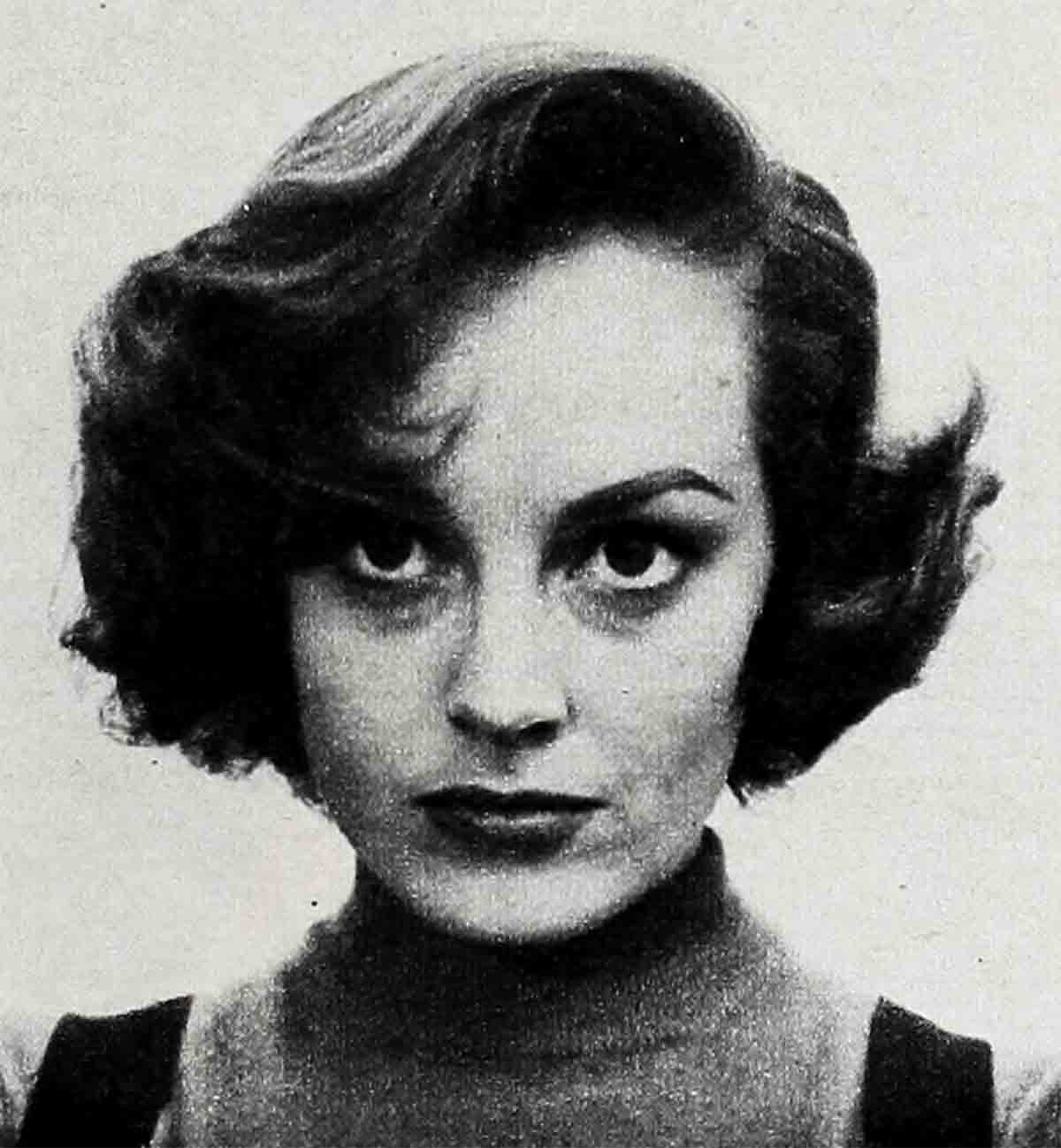
VICTORIA SHAW
Victoria Shaw has been in movies for only two of her twenty-two years, not enough time to have met many career crises, yet one of major proportions is clouding her future now.
Vicki’s auburn-haired, green-eyed beauty was evident even when she was a child, but the thought of a show-business career didn’t occur to her until after she graduated from school, took a fling at the business world and discovered that typing and filing weren’t her cup of tea; at which point she applied for a job at a modeling agency. Within three months she was known the length and breadth of her native Australia as “The Face” and found herself the highest-paid model in the country.
The events that followed she owes to Bob Hope, who was touring Australia. He asked her to appear in a show he was staging, and so impressed was he that afterwards he told her, “If you ever go to Hollywood, call my agent, Louis Shurr, and tell him I recommend you.” Action was the only answer to a suggestion like that. In less than a month she was on her way to Hollywood and ten days after her arrival, with Louis Shurr’s help, she won the second feminine lead in “The Eddy Duchin Story.”
Paradoxically, all Vicki’s troubles started after she landed a big-time movie contract. Her performance as Chiquita in the “Duchin Story” was more than just good for a starter, and her studio felt it could and should be choosey about picking just the right vehicle for her next picture. But fate threw a monkey-wrench into the works.
While her studio was busily turning down loanout offers, their star-in-the-making found out she was going to have a baby. She and husband Roger Smith couldn’t have been more delighted. They went back to Australia, partly to visit her family and partly to promote “The Eddy Duchin Story.” By the time they returned to Hollywood, Vicki couldn’t work. Months at home under doctor’s orders followed and daughter Tracey was born in June of this year.
What to do is the question. Vicki says, “At this point I don’t want to leave Tracey. I’m still on salary, but I have no idea when I’ll get a call to report to work. When I’m not taking care of the baby, I’m studying with Roger. We do scenes from plays together. It’s wonderful practice. Mostly, however, I’m playing mother and loving it!”
Verdict: Interest in a newcomer can fade fast under long absence from the screen. Pushing Vicki into any picture just to have her seen is certainly not the answer. But, while the right one is being found, her fans will have to be extra loyal.
THE END
It is a quote. PHOTOPLAY MAGAZINE DECEMBER 1957


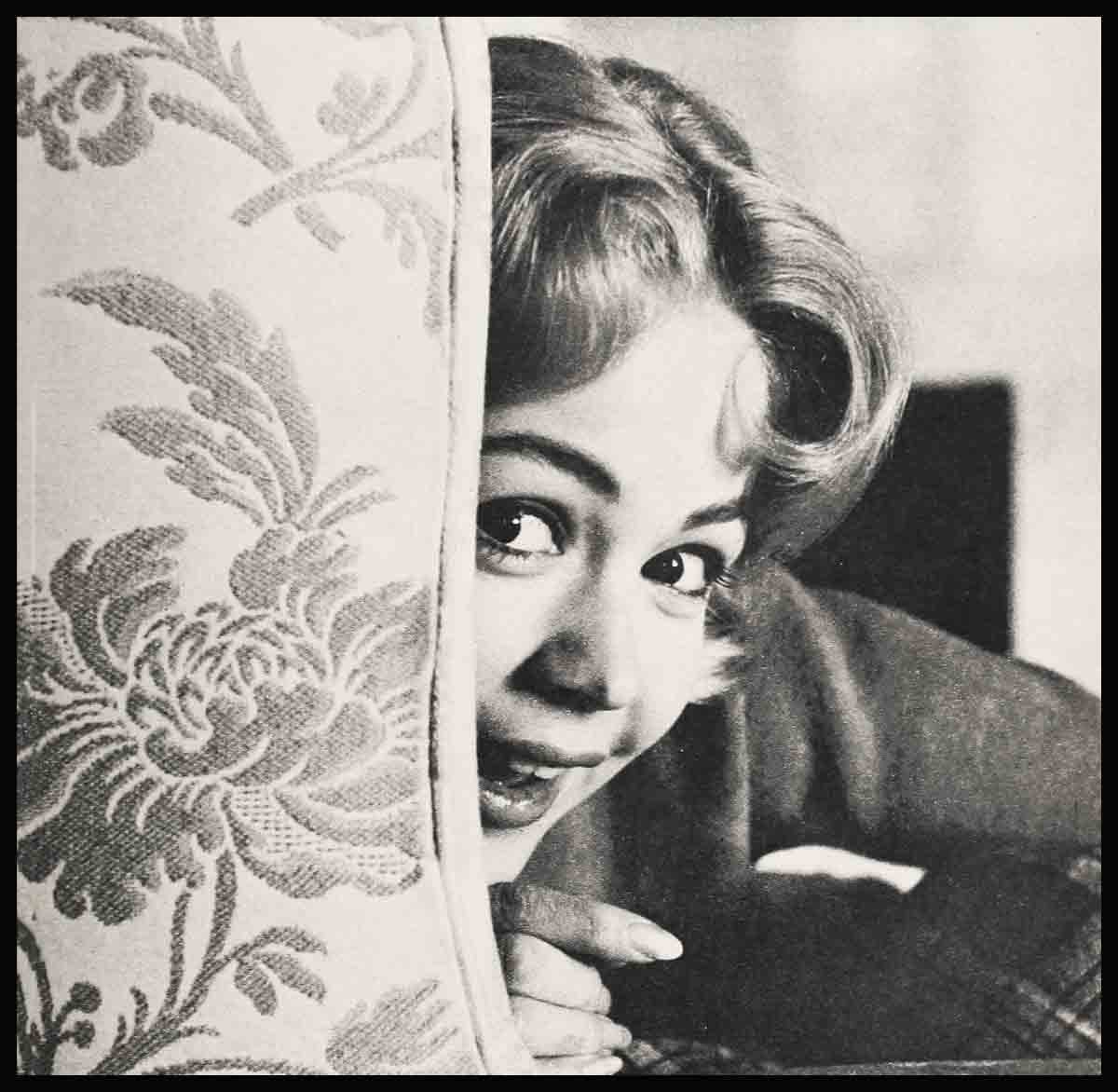
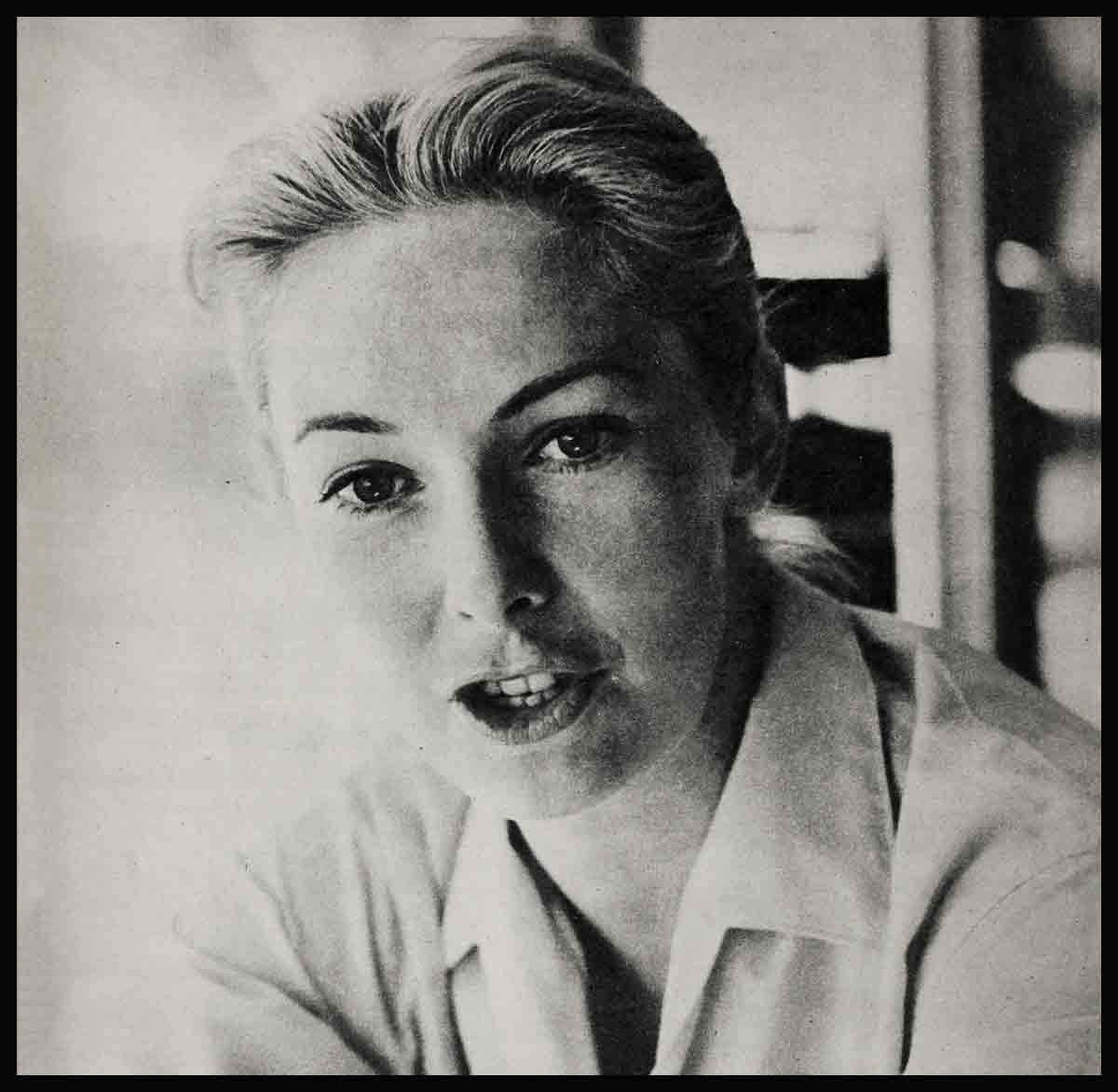

No Comments